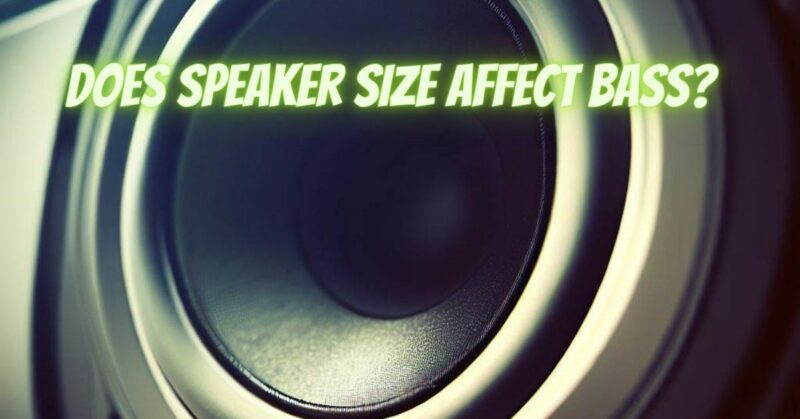The quest for deep, rich bass is a fundamental aspect of audio reproduction, whether in home audio systems, car audio setups, or portable speakers. One common question among audio enthusiasts and casual listeners alike is: does the size of a speaker affect its bass output? This article examines the relationship between speaker size and bass production, explaining the physics behind sound waves, the role of speaker design, and practical considerations for achieving optimal bass performance.
The Physics of Sound and Bass
- Sound Waves and Frequency:
- Low Frequencies: Bass refers to low-frequency sound waves, typically ranging from 20 Hz to 250 Hz. These sound waves are longer and require more energy to produce, which can influence the design and size of speakers.
- Wave Propagation: Larger speakers, with their greater surface area, can move more air, which is essential for producing these low-frequency sounds effectively. The ability to displace air directly impacts the volume and quality of bass.
- Speaker Size and Driver Dimensions:
- Woofer Size: The woofer is the speaker driver responsible for reproducing bass frequencies. Larger woofers (typically 8 inches or more in diameter) can move more air and generate deeper bass compared to smaller drivers.
- Cone Area (Surface Area): The cone area of a speaker affects its capacity to displace air. Larger cones have more surface area, which allows for better bass reproduction by moving more air with each vibration.
Speaker Design and Its Influence on Bass
- Enclosure Design:
- Cabinet Volume: The size and design of the speaker enclosure play a critical role in bass performance. Larger enclosures can enhance bass response by providing more air volume for the woofer to move. Properly designed ported (bass-reflex) or sealed (acoustic suspension) enclosures can significantly influence bass characteristics.
- Ported vs. Sealed Enclosures: Ported enclosures use vents or ports to enhance bass response by allowing air to move in and out of the cabinet, which can increase efficiency and extend low-frequency output. Sealed enclosures provide tighter, more controlled bass but may not reach as low in frequency as ported designs.
- Driver Materials and Design:
- Cone Material: The material used for the woofer cone can affect its performance. Materials like paper, polypropylene, and Kevlar each have unique properties that influence the speaker’s response to bass frequencies.
- Surround and Suspension: The flexibility and durability of the surround and suspension mechanisms impact the woofer’s ability to move efficiently, affecting bass reproduction.
- Power Handling and Amplification:
- Amplifier Power: Adequate amplification is crucial for producing strong bass. Larger woofers typically require more power to drive them effectively. A powerful amplifier can help maximize the potential of larger speakers, ensuring they produce deep and accurate bass.
Practical Considerations for Bass Performance
- Room Acoustics:
- Room Size and Shape: The acoustics of the room where the speaker is placed can significantly impact bass response. Larger rooms may benefit from larger speakers that can fill the space with sound, while smaller rooms might achieve better results with smaller speakers to avoid overwhelming bass.
- Placement: The position of the speaker within the room also affects bass performance. Placing speakers near walls or corners can enhance bass due to boundary reinforcement, but it may also introduce unwanted resonances or boomy sound.
- Subwoofers:
- Dedicated Subwoofers: To achieve optimal bass performance, especially in a home theater or high-fidelity audio system, incorporating a dedicated subwoofer is often the best solution. Subwoofers are specifically designed to handle low frequencies and can complement smaller main speakers, providing deep bass without requiring large speaker cabinets.
- Listening Preferences and Usage:
- Personal Taste: Individual preferences play a significant role in determining the ideal speaker size for bass. Some listeners may prefer the impactful, room-shaking bass from large woofers, while others might prioritize clarity and precision from smaller setups.
- Use Case: The intended use of the speaker system—whether for music, movies, or gaming—can influence the choice of speaker size. Different applications may have varying requirements for bass performance.
Speaker size does indeed affect bass output, with larger speakers generally capable of producing deeper and more powerful bass. However, achieving the best bass performance involves more than just selecting larger speakers. The design of the speaker enclosure, the materials and design of the driver, the power of the amplifier, and the acoustics of the listening environment all play critical roles. By understanding these factors and considering practical aspects like room size and personal preferences, listeners can make informed decisions to achieve the desired bass response in their audio systems.

